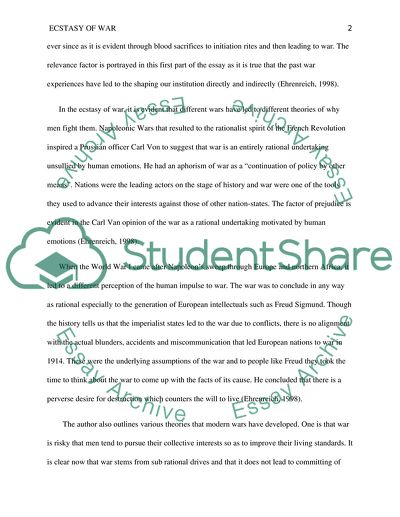Cite this document
(“Ecstasy of war Book Report/Review Example | Topics and Well Written Essays - 1000 words”, n.d.)
Retrieved from https://studentshare.org/literature/1630303-ecstasy-of-war
Retrieved from https://studentshare.org/literature/1630303-ecstasy-of-war
(Ecstasy of War Book Report/Review Example | Topics and Well Written Essays - 1000 Words)
https://studentshare.org/literature/1630303-ecstasy-of-war.
https://studentshare.org/literature/1630303-ecstasy-of-war.
“Ecstasy of War Book Report/Review Example | Topics and Well Written Essays - 1000 Words”, n.d. https://studentshare.org/literature/1630303-ecstasy-of-war.


